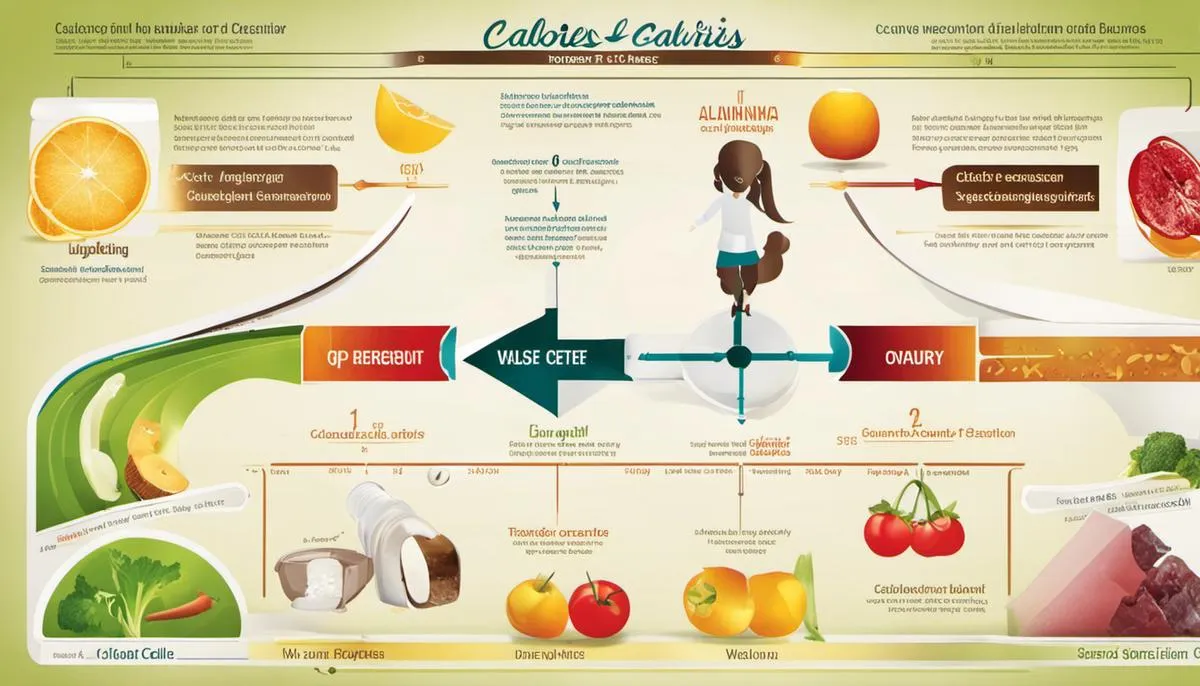Table of Contents
As we increasingly embrace healthier lifestyles, it becomes crucial to understand and monitor one’s caloric intake. This guide seeks to dissect and elaborate on the calorie count specifically in a popular healthy food option, a chicken salad. Understanding calories, their function and daily requirements is the initial step in this journey. We then delve into the specific calories in different portions of chicken, highlighting how various cooking methods can affect this. A deeper look into the components of a chicken salad, from lettuce to dressings, unveils how each contributes to the total calorie count. Finally, equipping readers with the knowledge to calculate the total calorie count in their homemade chicken salad provides a practical application of this information.
Understanding Calories
Understanding Calories in Our Diet
Calories fundamentally are units of energy that your body uses to function and carry out a diverse range of activities in the course of a day. Everything we eat and drink, except for water and unsweetened tea or coffee, contains calories. Our body needs these calories for essential functions such as breathing, circulating blood, adjusting body temperature, and a myriad of additional tasks. When we consume more calories than our body needs for these functions, the body stores the excess fat, which can lead to weight gain over time.
Calories in a Chicken Salad
If we specifically look at something like a chicken salad, the number of calories can greatly vary depending on the ingredients used. A basic chicken salad with grilled chicken, lettuce, tomatoes, cucumber, and a light dressing can be as low as 200 to 300 calories, which could satisfy one’s hunger while keeping their caloric intake quite moderate. However, when you add items such as cheese, bacon, croutons, and creamy dressings, the caloric content can easily reach 500 to 800 calories or even more. The counterintuitive part here is that you may be consuming more calories in this ‘healthy’ salad than you would in a fast-food burger or pizza slice.
Understanding the caloric content of the foods we consume is essential in managing our weight and overall health. On average, adults generally require between 1,500 to 2,500 calories daily. This range can differ significantly based on variables like age, gender, and level of physical activity.
For instance, a young, active male might require up to 3,000 calories a day, whereas a less active, elderly female might only require 1,600. Balancing the number of calories consumed with the number burned through physical activities plays a crucial role in weight management. Our everyday food choices, such as choosing to eat a chicken salad, have a direct impact on this balance. Consuming more calories regularly than what our bodies burn can lead to weight gain.

Caloric Content in Chicken
Caloric Values of Chicken Parts
Chicken is a popular choice for salads due to its high protein and low-fat composition. The part of the chicken used in your salad can affect the overall caloric content. For example, a 3.5-ounce portion of cooked, boneless, skinless chicken breast contains about 165 calories. If you opt for a chicken thigh instead, the same portion size has roughly 209 calories. Chicken wings, typically the least lean part of the bird, contain around 203 calories for a 3.5-ounce cooked portion. Keep in mind, though, these caloric values can slightly vary depending on how the chicken is cooked, and whether or not you consume it with skin.
Impact of Cooking Methods on Chicken’s Caloric Content
Much of the chicken’s caloric content is in its skin. So whether you cook and consume the chicken with its skin can significantly impact the overall calories. For instance, a skin-on, roasted chicken breast can contain up to 210 calories. However, removing the skin before eating can lower this value substantially. Cooking methods themselves can also influence the calorie count. Grilling or roasting chicken is generally a healthier choice as these methods don’t require adding much if any, additional fat. However, frying or sautéing chicken in oil or butter can add a significant number of calories.
Understanding the number of calories in a chicken salad also means taking into account the dressing. For example, store-bought dressings can be a hidden source of added fat and calories. What may seem like a healthy chicken salad can take a sudden turn into an unhealthy option depending on the dressing and additional ingredients used. To maintain a healthier, lower-calorie chicken salad, consider checking nutrition labels, making your own dressing with healthier components, or choosing low-fat or reduced-calorie versions.

Components of a Chicken Salad
Breaking Down the Ingredients and Their Caloric Contribution to Chicken Salad
The number of calories in a chicken salad chiefly depends on its primary ingredients. Fundamentally, a typical chicken salad includes cooked chicken breast, lettuce, tomatoes, and cucumbers. A serving of 100 grams of skinless, cooked chicken breast, for instance, has around 165 calories, which is usually the ingredient with the most calories in the salad. Contrastingly, fresh vegetables like lettuce, tomatoes, and cucumbers carry far fewer calories. As an illustration, one cup of chopped romaine lettuce adds about 8 calories, a medium-sized tomato contributes 22 calories, and a half-cup serving of sliced cucumbers gives only 8 calories.
The Role of Dressings and Toppings in Caloric Content
Critically evaluating the calorie content of a chicken salad requires a deeper look into the role of salad dressings and extras. These seemingly harmless flavor enhancers can substantially affect the calorie count. For instance, a mere two tablespoons of Ranch dressing can contribute around 145 calories, which is nearly twice the calories of the salad vegetables. Other dressing types such as Caesar or vinaigrette can add an extra 80-130 calories for the same serving size. If you’re aiming for a low-calorie salad, it’s prudent to select less calorie-dense dressings or substitute with simple flavorings like lemon juice, herbs, or black pepper. Additionally, remember to factor in the calories added by common extras like croutons, cheese, or bacon.

Calculating Total Calories in a Chicken Salad
Understanding the Caloric Breakdown of Your Chicken Salad
The quickest route to becoming well-versed with the total calorie count in your chicken salad is to accumulatively consider the calorie values of each ingredient. A standard chicken salad typically includes chicken, vegetables or greens, dressing, and sometimes a combination of croutons, cheese, nuts, or dried fruit as an extra crunch. Here’s an example to assist with this breakdown: a salad containing boneless, grilled chicken breast (skinless), lettuce, tomatoes, cucumbers, carrots, and a low-fat dressing.
As per USDA estimates, a 3-ounce portion of cooked chicken breast gives approximately 128 calories. A cup of mixed greens contributes around 10 calories, a medium-sized tomato adds about 22 calories, half a cup of cucumbers provides 8 calories, and a medium carrot equals almost 25 calories. Adding a tablespoon of low-calorie salad dressing can increase the count by around 15-20 calories, depending on the specific type and brand. Thus, without any extra toppings, this basic salad sits at a total of approximately 200-210 calories. It’s noteworthy, however, that additions like cheese, seeds, croutons, or a heavier dressing can significantly boost the total calorie count.

Understanding the caloric value of the foods we consume, especially favorites like chicken salad, can significantly contribute towards healthier eating habits. Breaking down the components of the salad, the chicken, vegetables, and dressings, allows us to comprehend how each contributes to the total calorie count. Furthermore, providing methods to calculate these calories empowers you to monitor and regulate your dietary habits more effectively. Remember, the key to a balanced diet lies not in eliminating foods, but making more informed choices and understanding their impact on our bodies.

